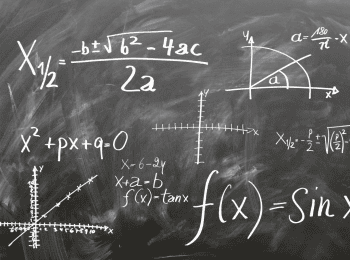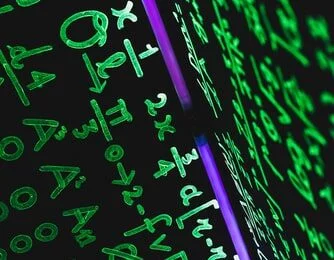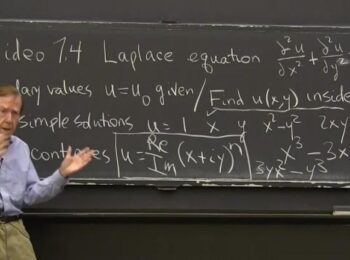A common joke found all over the internet is a comment about teachers telling students who wouldn’t always have a calculator in their pocket. Obviously, the following comment is usually just an image of a modern cellphone. While we can all laugh at the joke behind this dialogue, the teacher is still right. A calculator on your phone can’t read your mind and write the equation for you.
That’s a broad statement, but it’s true for all forms of math from simple word problems to complex calculus of algebra problems. You need to know how to write out the equation and which equation to use. Understanding formulas like Euler’s Method are critical to solving many real-world problems and passing a college calculus class.
What Is Euler’s Method?
To understand Euler’s method, you’ll need to understand a few other math terms or formulas as well. The focus of this article is Euler’s method, so expect our definitions to be short and summarized. If you need more information on any of the topics, a quick search online will explain anything we leave out. That said, our definitions should convey all the knowledge you need to understand this method.
On occasion, you may need to solve a differential equation where you can’t use separation of variables, or you may get specific conditions to satisfy. Some of the methods you learn to conquer these types of equations simply won’t work. They should work, but the problem either ends up with an obviously incorrect answer and keep rolling over.
You can solve these types of differential equations using Euler’s method almost without failing. Why this isn’t the standard method taught in class is beyond us. That said, we’re going to help you understand Euler’s Method and how to use it. Before we get into the examples and a better explanation, let’s define some terms we’re going to use. The key terms we may use include:
-
Differential equations: This is an equation that uses a derivative to solve the equation for a function.
-
Functions: This describes the relationship between the variables you put in and what comes out. It’s typically written out as f(x) or g(x). Each variable you put in has a relationship with the answer. That relationship is the function. Sine and tangent are trigonometry functions.
-
Derivatives: A derivative is usually used to define a slope or the change in a slope. You would use the slope formula to find the derivative of y = f(x).
-
Separation of variables: This is typically how you solve differential equations by moving like terms to one side of an equation. The equation is generally noted by an equal sign.
-
Tangent line: This is any line that comes in contact with a curve and mimics the curve where it runs into it. Small tangent lines are the basis of Euler’s Method. Tangent lines are usually outside of a curve if that curve is a circle.
-
Slope: This is any number that tells us the direction of a line and how steep that line may be along its path. A slope is equal to the rise divided by the run of the line.
Any other terms that require a definition will get defined in the same section. For now, those are the basic terms aside from understanding the basics of how to graph or work with fractions and variables. If you’re reading this, we assume you know how to create a graph or work with variables on some level whether it’s this advanced or on a lower tier.
Using tangent lines, Euler’s Method helps you approximate the solution to any equation, almost, if you know the initial value. If the problem changes rapidly or changes direction more than once, Euler’s Method may not work. That said, if the graph changes direction you’ll end up with multiple curves instead of one which rules out using Euler’s Method altogether.
Euler’s Method is one of three favorite ways to solve differential equations. As we mentioned earlier, you may be able to use separation of variables, or you might find slope fields are the best method. Euler’s equation is must have a starting value or an assumed starting value in order to work. If you don’t have either of those things, refer to the other two methods we mentioned.
Using Euler’s method, we can see what goes on over a segment of our curve by intersecting or paralleling it with our tangent line. In short, Euler’s Method is used to see what goes on over a period of time or change. For instance, it can approximate the slope of a curve or define how money market funds changed over time.
Using Euler’s Method, we can draw several tangent lines that meet a curve. Each line will match the curve in a different spot. By getting the approximate solution or equation where each line meets the curve, we can begin to put together a picture of what is happening along our curve. In short, Euler’s Method is just a lot of tangent lines strung together to help us guess at what the cure is doing as it travels.
Cons Of Using Euler’s Method
Since Euler’s Method only gives us approximate values, there may be room for error in the final result. If the curve is sharp and changes rapidly at any point, the solution we find at these sharp turns using Euler’s Method may lack accuracy. However, this is precisely where Euler’s excels if you need to crudely calculate why something sped up like rates of deaths due to disease or sales over a specified period.
While many people refer to Euler’s Method as a formula, and you can write a pseudo formula for it, it’s not a formula; it’s a method. It produces a solution without variables which may be considered an approximate value of the current problem. It also causes some issues with math teachers if they want you to use a specific formula or method.
When Would I Use Euler’s Method Outside Of Class?
Differential equations end up being a big part of our lives whether directly or indirectly. Mathematicians sometimes work with biologists to develop programs for monitoring diseases or population problems. Other mathematicians may work in banking or economics while some find their home in writing about things like Euler’s Method and exploring the different ways to solve differential equations.
Differential equations help scientists monitor everything from the Moon’s orbit to the rate at which a glacier may melt. We could keep giving examples, but we believe you understand how vital understanding this part of math is to your daily life and possibly your future career. Many professions beyond being a mathematician rely on approximations and solving differential equations.
You can check the Bureau of Labor Statistics for specific information on many job titles including those that use math a lot. Many careers at NASA require a firm grasp of applied mathematics and calculus. It’s how they figure out how to fly by a planet without hitting it which is probably essential. Pharmaceutical science uses calculus and is required for many jobs at places like Bayer as well.
Aerospace engineers spend their time creating and designing satellites, space vessels, space stations, and other human-made objects that need to survive in space. They rely on math heavily to do their jobs and ensure the safety of the equipment the build and the astronauts that us it.
Earthquake Safety Engineers rely on all forms of math to design better buildings and materials that withstand earthquakes. They also use math to build models to test their designs in a computer simulation. The same modeling steps may also be used to determine the damage existing structures might suffer during an earthquake
Aside from the complicated math used in the professions, we mentioned above, Euler’s method has many practical applications and may help determine simpler things like the rate of flow for running water. Similar methods and functions got used to help figure out how to shut off an oil leak that was 1,800 feet below the ocean’s waters.
It’s impressive how math affects our lives every minute of the day. Many people don’t realize its importance, but we’re hoping we’ve conveyed the message well. That said, most common functions and formulas come preprogrammed into computers and calculators used in science-based fields. However, you still need to understand why and when to use them.
Some Final Notes
Euler’s Method is undoubtedly one of the most exciting formulas we’ve come across. Approximations usually find their home in less precise math problems. However, Euler’s method gets used across the spectrum of physics and various disciplines that use calculus. We don’t always need to know changes at every point along a curve, or we may have a starting value, and that’s when Euler’s Method works best.
The video may take a few seconds to load.
Having trouble Viewing Video content? Some browsers do not support this version – Try a different browser.






